Underwater Meadows of Life
Follow ( 0 Followers ) X Follow E-mail : * Follow Unfollow
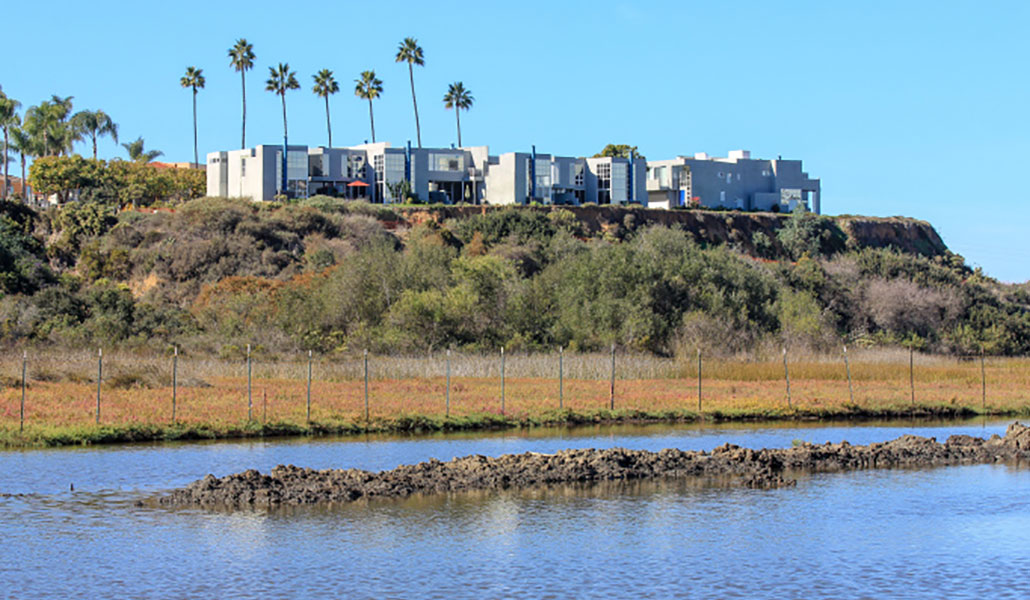
Is it November already?! Just after Thanksgiving last year the San Elijo Lagoon Restoration, also known as Reviving Your Wetlands, was officially launched in a public ceremony. Fast-forward to November 2018 and the changes are amazing as they unfold. Restoration is progressing efficiently and ahead of the original construction schedule as project innovations are kicking in to modify plans and solutions as we go along.
Notice the piles of sediment in the East basin? Soon, they will be gone. Dredging will soon begin in the East basin. The Ross Island Dredge No. 10 will be reassembled in the East basin early this month, and will begin removing the piles of sediment to create new channels.
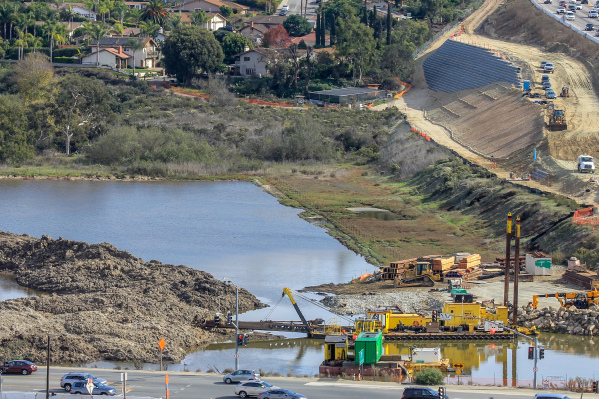
The disassembled dredge in the East Basin will be soon be reassembled
to continue building channels.
Later this month, you will also see dredging resume in the Central basin. Two smaller dredges will begin removing sediment from the existing channels in this area to increase tidal circulation.
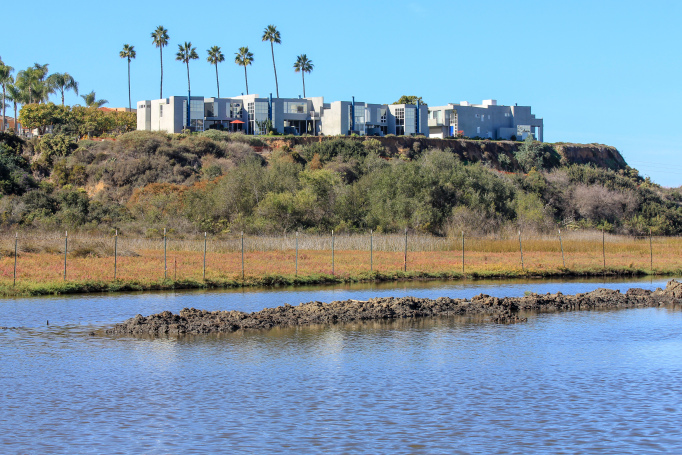
Piles of sediment in the central basin, waiting to be dredged
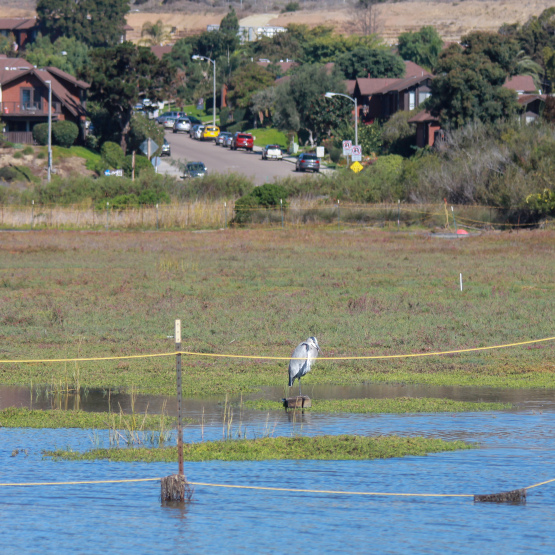
Great Blue Heron in the Central basin, hunting for lunch
The next higher-tide tidal flushing will occur around Thanksgiving from November 22-25.Lagoon visitors and nearby neighbors may see nighttime lighting at the temporary dike in front of the nature center during the process. Done monthly, this flushing will allow ocean water to flood the central basin and reach the vegetation in the area. The water quality will continuously be monitored by the Conservancy throughout the process.
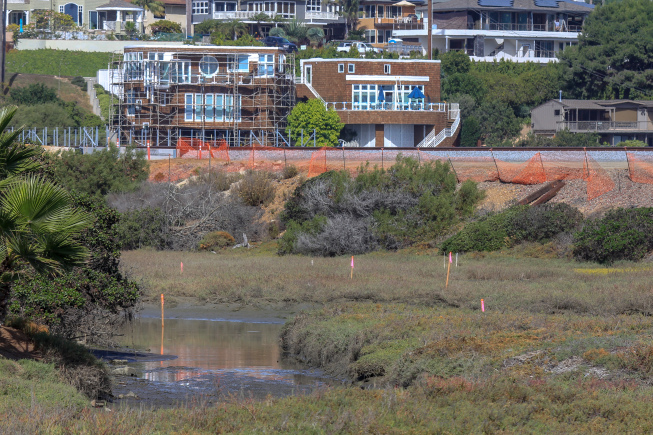
Stakes in the West Basin
There are now stakes in the West basin that you can see from Highway 101. These stakes outline the upcoming West Basin project area. In the coming weeks ESA (environmentally sensitive area) fencing will also be installed. This fencing will ensure that the project footprint is contained, but does not prevent any animals from coming and going.
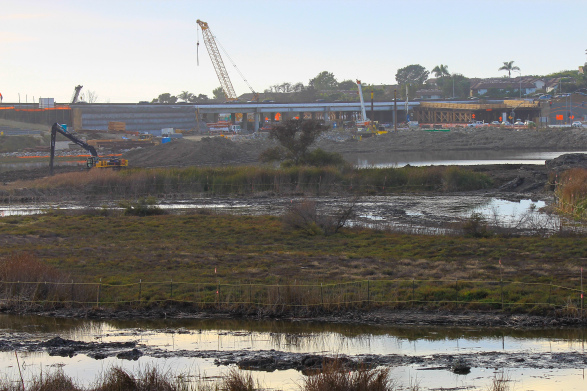
Excavator in the East basin seen from the Santa Carina trail
Excavators are continuing to sculpt channels in the East basin. Sculpting the sides of the channels will create mudflats, which are an important part of the lagoon as they house an abundance of species, including crabs and mollusks, two main food sources for the birds of the lagoon, including the Great Blue Heron.
Have a question? Leave us a comment! We are guided by your curiosity. Thank you for following Lagoon Connections, our voice for continued updates, news and views in the Reviving Your Wetlands Lagoon Restoration.
Follow ( 0 Followers ) X Follow E-mail : * Follow Unfollow